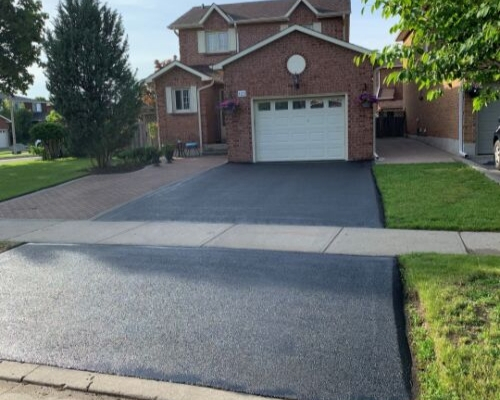
Does your driveway have cracks and needs sealing? A cracked driveway is pretty much an eyesore and if not fixed immediately, the cracks become larger and are a hazard around the home. Resealing a cracked driveway is an easy project. However, to get it right you need to leave it to professionals to offer durable solutions.
Professionals who specialize in driveway sealing and interlock sealing in Vaughan have the expertise and tools to ensure they offer durable solutions to driveway problems. Driveways, just like roads, need periodic sealing and prompt repair. The best time to undertake driveway maintenance is during the summer. This is because products used in sealing and repair work best when applied in high temperatures. Avoid driveway sealing during the rainy season. The following are steps taken when fixing cracks and sealing driveways.
Driveway cleaning

Before fixing cracks and sealing a driveway, the driveway has to be cleaned first. A broom or a blower is used to sweep dust, acorns and leaves from the surface of the driveway. If there are any oil stains on the driveway, a primer or degreaser is used to disguise and clean the stains prior to sealing. Check in between the cracks for any weeds and pluck them. Driveways that are under a shade are prone to moss growth and if that’s the case with your driveway, a pressure washer will be used to clean it. After a thorough cleaning of the driveway, it is left to dry completely before working on it.
Cracks and holes patching
Cracks in a driveway that are less than half an inch are filled using fluid filler. A professional ensures that they don’t apply too much filler since it will show beneath the finished sealed coat. In case of an overfill, a scraper is used to spread and level out the excess filler. After, the filler is left for 4-8 hours before sealing the top. Cracks and holes that are greater than half an inch and with a definitive boundary need specialized tools to fill. A tamper or a driveway patch is used to make repairs. When a driveway patch is used, the top is left to cure for 4-6 weeks before sealing.
Mixing the sealant
The sealant is mixed one bucket at a time and each is poured to a crack or hole by tipping the product upside down before the product is opened. Before the sealant can be applied, the driveway is cleaned again using a blower or a broom to get rid of any debris on the surface.
Edge sealing
The edges of a driveway are sealed using a brush. A brush is used because it is easy to cut in around the edges without leaving a mess. A squeegee is used to cover the main area of the driveway. A driveway is usually sealed from the top of the driveway towards the end to get the best results.
Poring the sealant
A line of sealant is poured along the width of a driveway. The squeegee is then held at a 45- degree angle and pulled over to compress the sealant into the surface of the driveway. Little pressure is applied when spreading the sealant since it has self-leveling qualities. The right amount of pressure is applied when spreading the sealant to ensure the right thickness of sealant is applied. After the sealant is applied across a width, the contractor pauses before they can pour the next width of sealant. Once the whole driveway is covered, it is left for 24 hours to cure.
Second coat application
A second coat of sealant is applied in order to cover areas that did not get a proper amount of sealant the first time around. The second layer creates a stronger seal to protect the driveway. The driveway has to be left to dry for 48 to 72 hours before driving on it.


